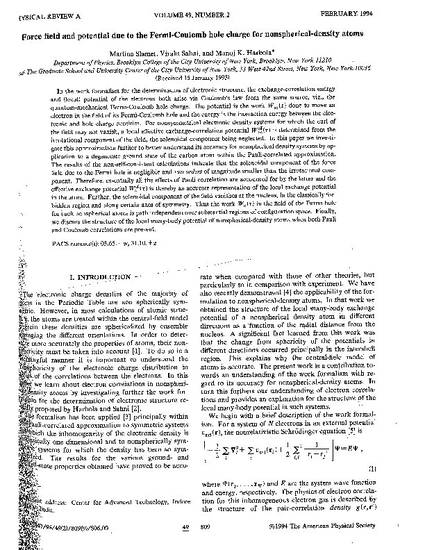
In the work formalism for the determination of electronic structure, the exchange-correlation energy and (local) potential of the electrons both arise via Coulomb’s law from the same source, viz., the quantum-mechanical Fermi-Coulomb hole charge. The potential is the work Wxc(r) done to move an electron in the field of its Fermi-Coulomb hole and the energy is the interaction energy between the electronic and hole charge densities. For nonsymmetrical electronic density systems for which the curl of the field may not vanish, a local effective exchange-correlation potential Wxceff(r) is determined from the irrotational component of the field, the solenoidal component being neglected. In this paper we investigate this approximation further to better understand its accuracy for nonspherical density systems by application to a degenerate ground state of the carbon atom within the Pauli-correlated approximation. The results of the non-self-consistent calculations indicate that the solenoidal component of the force field due to the Fermi hole is negligible and two orders of magnitude smaller than the irrotational component. Therefore, essentially all the effects of Pauli correlation are accounted for by the latter and the effective exchange potential Wxeff(r) is thereby an accurate representation of the local exchange potential in the atom. Further, the solenoidal component of the field vanishes at the nucleus, in the classically forbidden region and along certain axes of symmetry. Thus the work Wx(r) in the field of the Fermi hole for such nonspherical atoms is path independent over substantial regions of configuration space. Finally, we discuss the structure of the local many-body potential of nonspherical-density atoms when both Pauli and Coulomb correlations are present.
Available at: http://works.bepress.com/marlina_slamet/7/

Originally published:
Slamet, Marlina, Sahni, Viraht, Harbola, Manoj. "Force Field and Potential Due to the Fermi-Coulomb Hole Charge for Nonspherical-Density Atoms." Physical Review A 49.2 (1994).